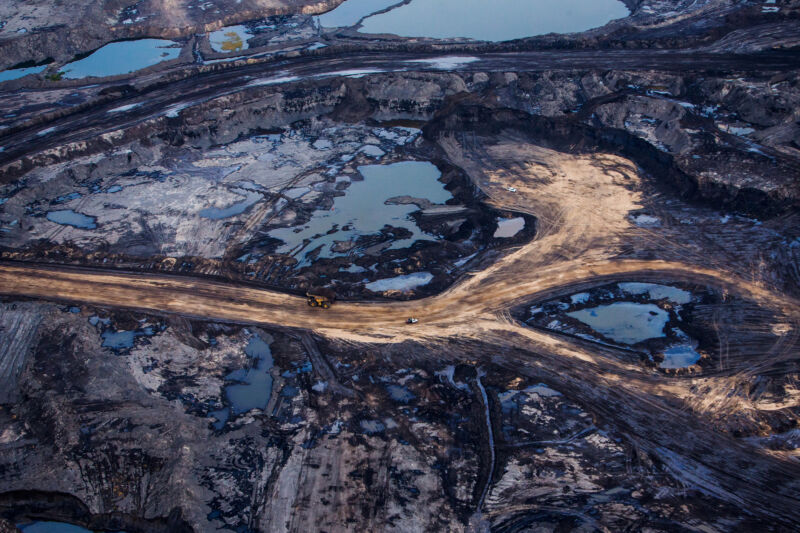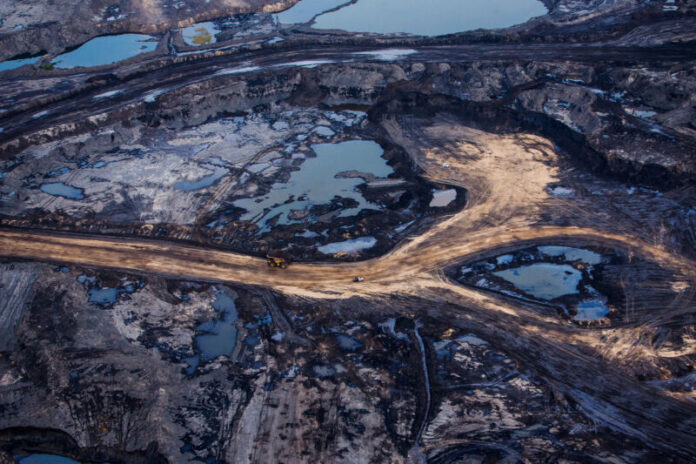
Enlarge / Aerial view of the Athabasca oil sands near Fort McMurray, Alberta, Canada. (credit: Bloomberg Creative via Getty)
Canada’s tar sands have gained infamy for being one of the world’s most polluting sources of oil, thanks to the large amounts of energy and water use required for their extraction. A new study says the operations are also emitting far higher levels of a range of air pollutants than previously known, with implications for communities living nearby and far downwind.
The research, published Thursday in Science, took direct measurements of organic carbon emissions from aircraft flying above the tar sands, also called oil sands, and found levels that were 20 to 64 times higher than what companies were reporting. Total organic carbon includes a wide range of compounds, some of which can contribute directly to hazardous air pollution locally and others that can react in the atmosphere to form small particulate matter, or PM 2.5, a dangerous pollutant that can travel long distances and lodge deep in the lungs.
The study found that tar sands operations were releasing as much of these pollutants as all other human-made sources in Canada combined. For certain classes of heavy organic compounds, which are more likely to form particulates downwind, the concentrations were higher than what’s generally found in large metropolises like Los Angeles.
Read 18 remaining paragraphs | Comments
Ars Technica - All contentContinue reading/original-link]




